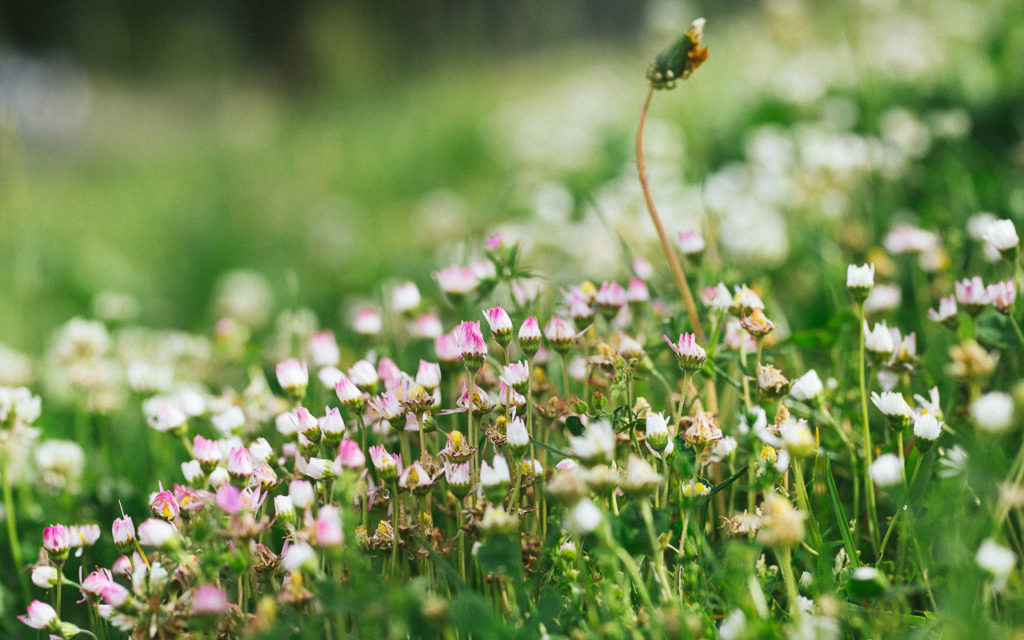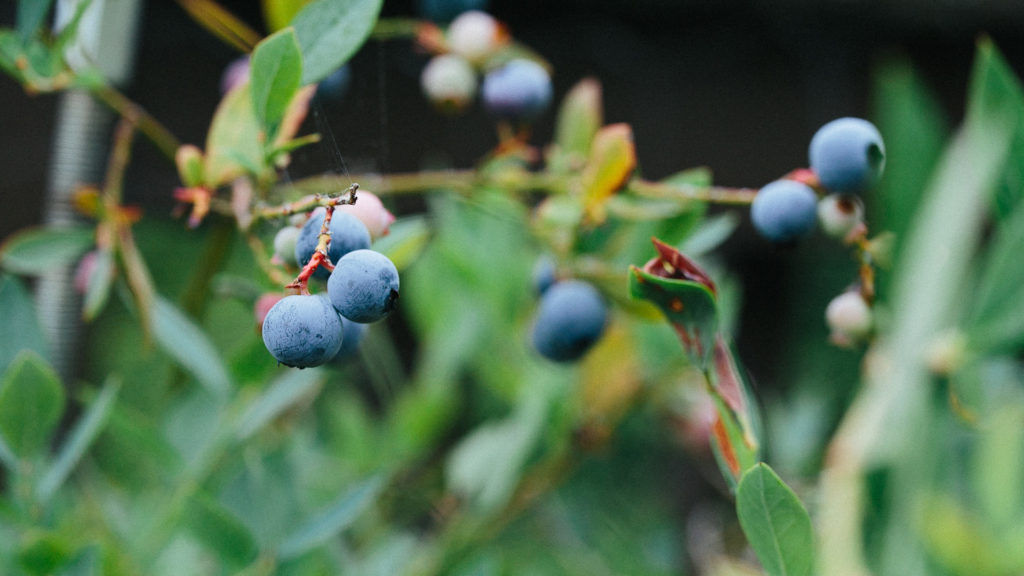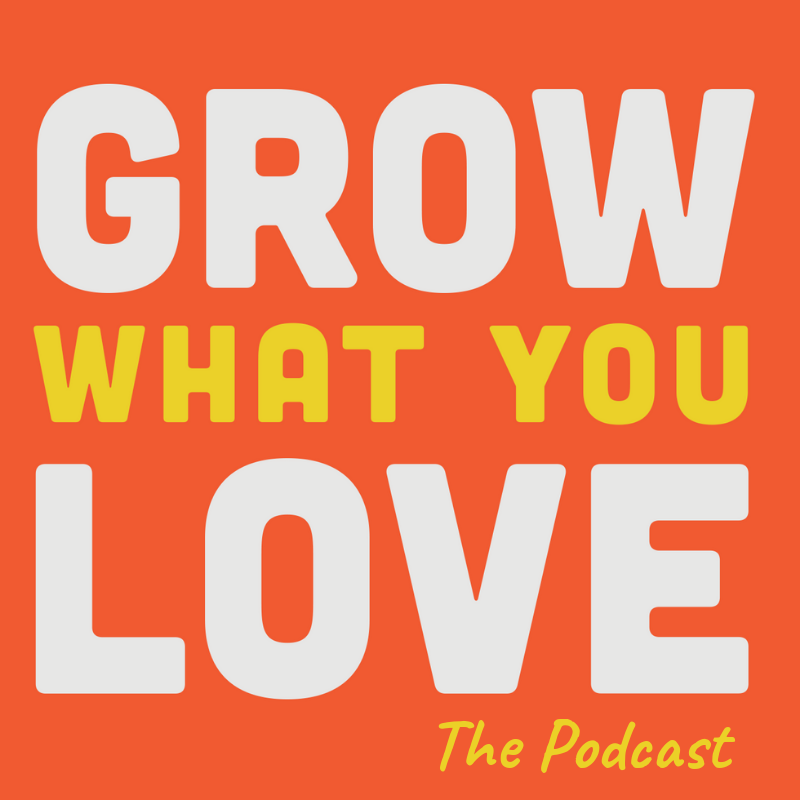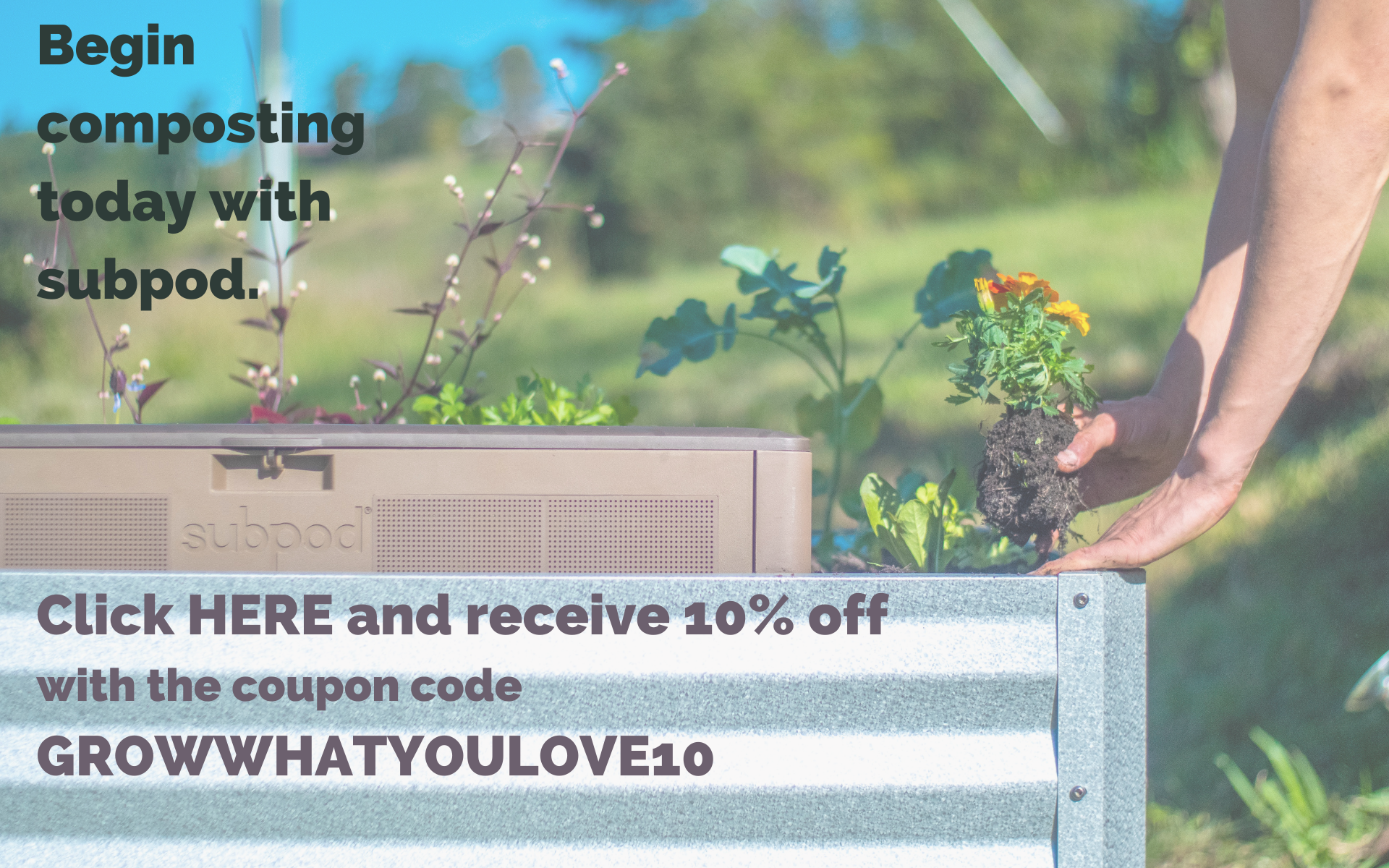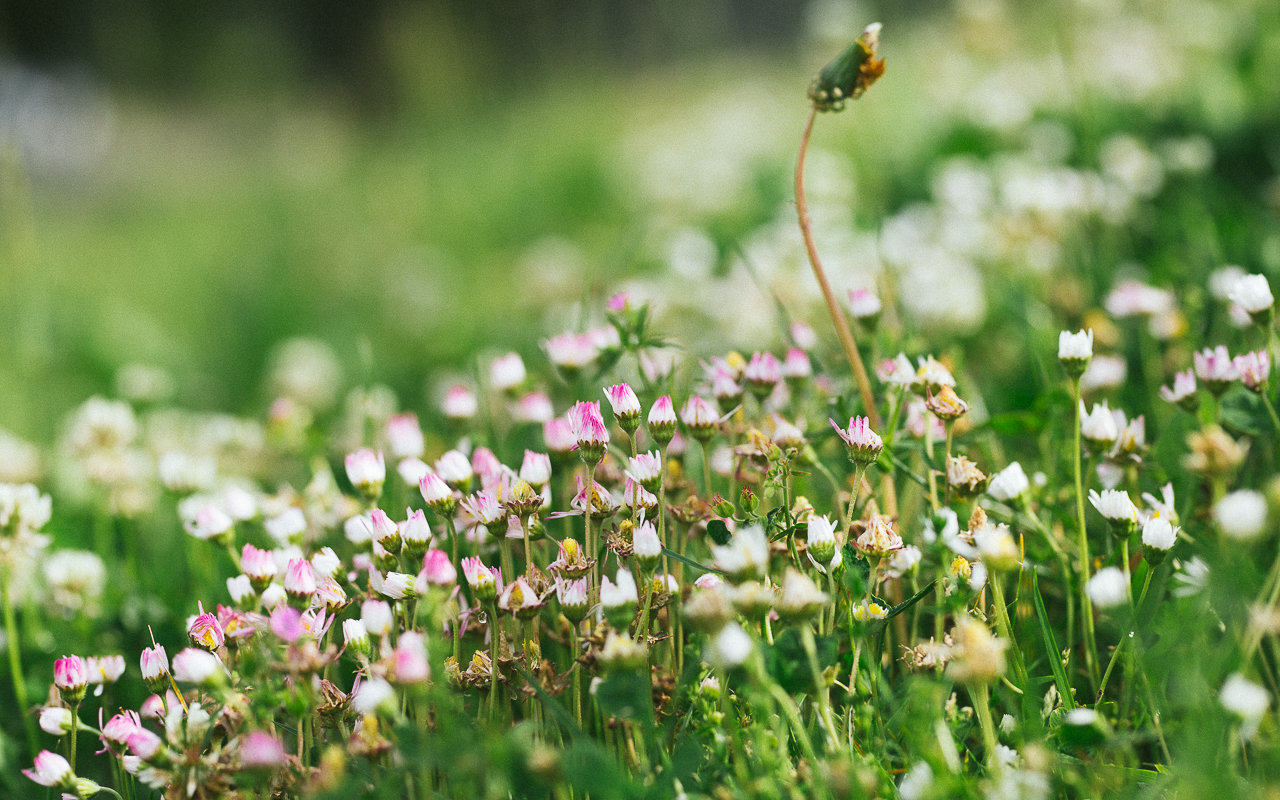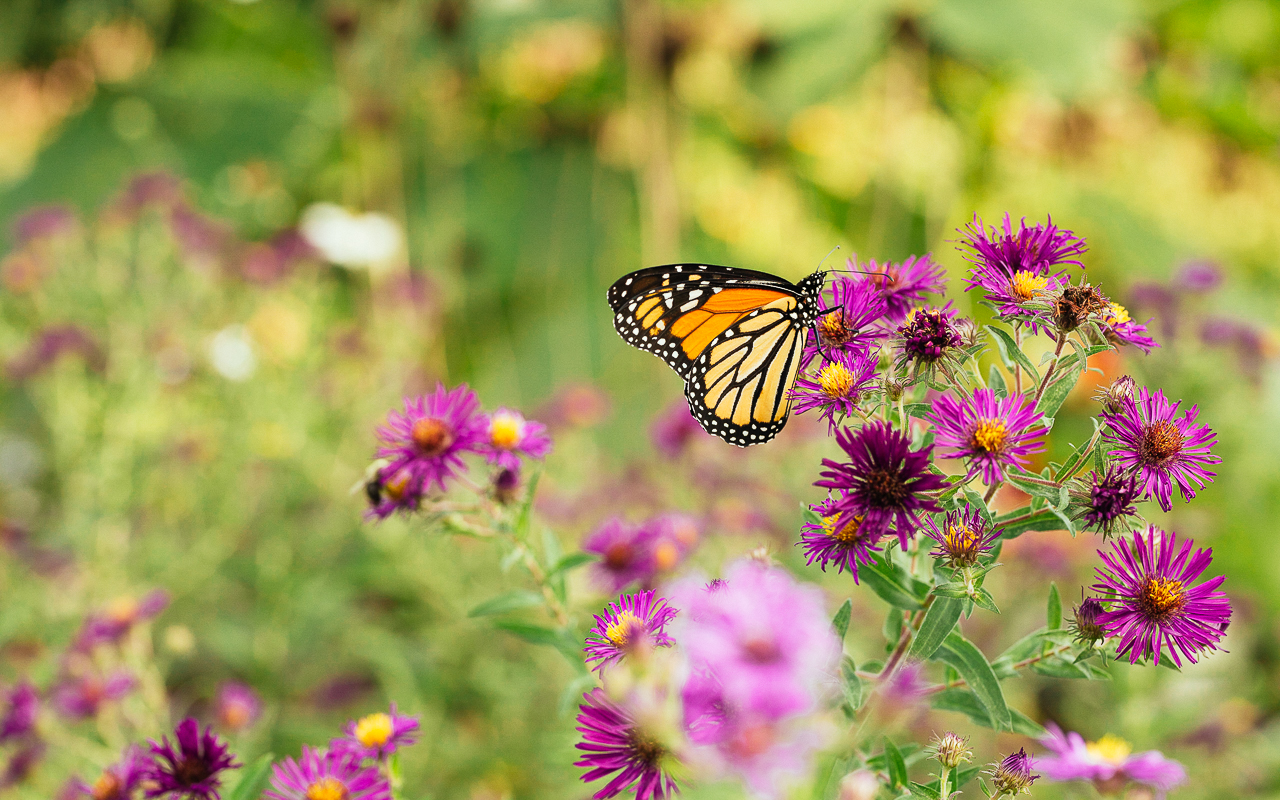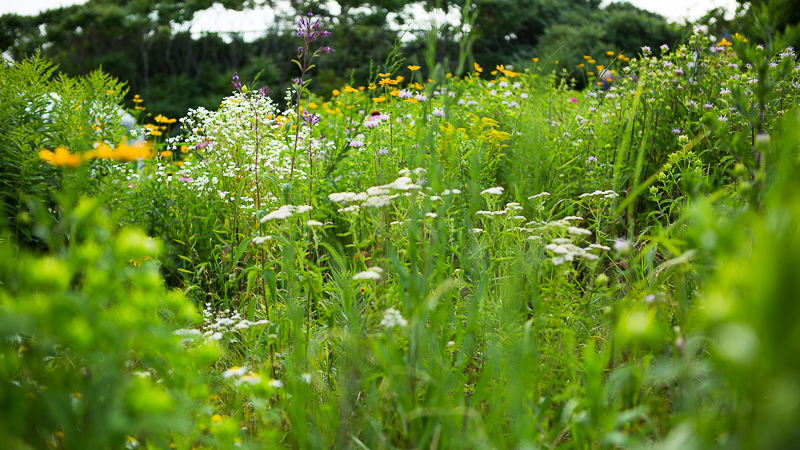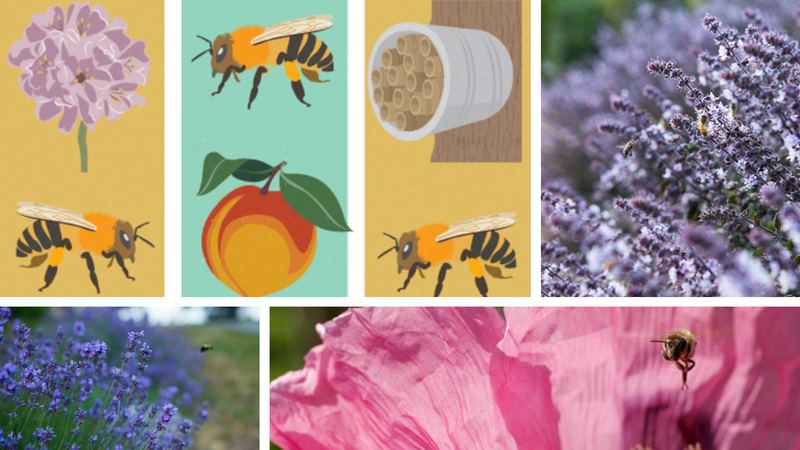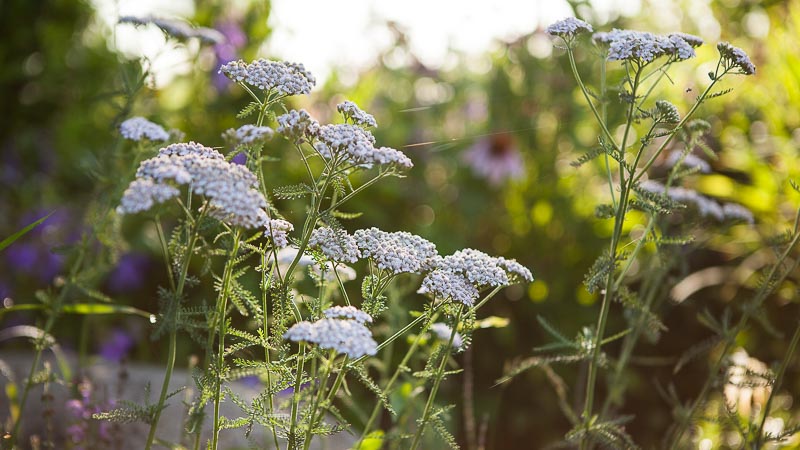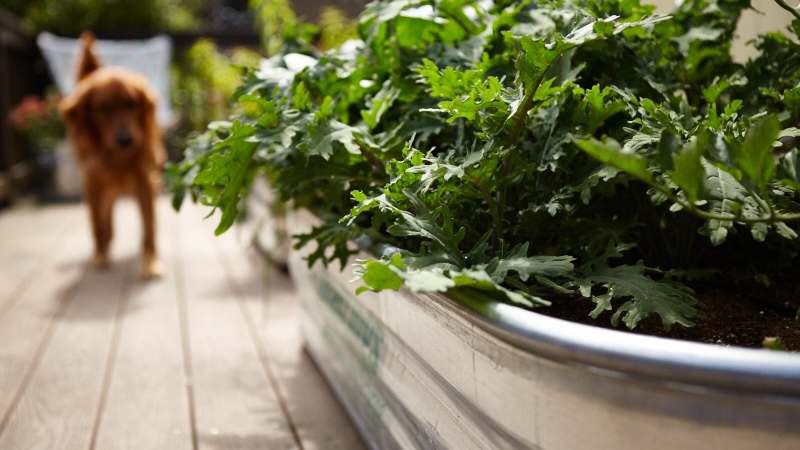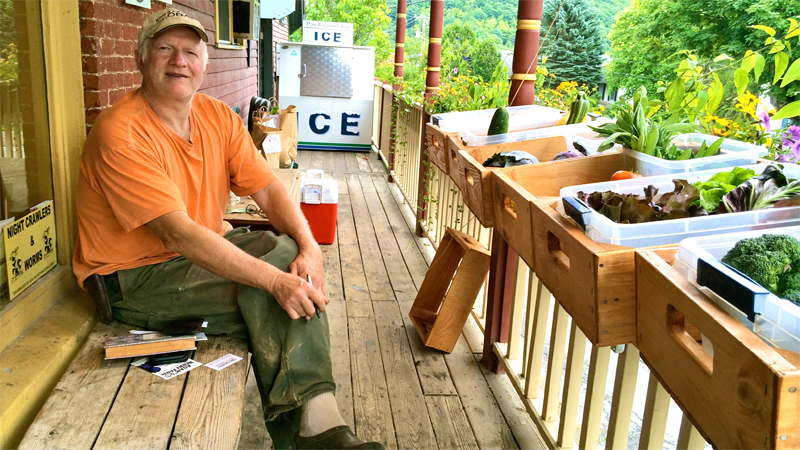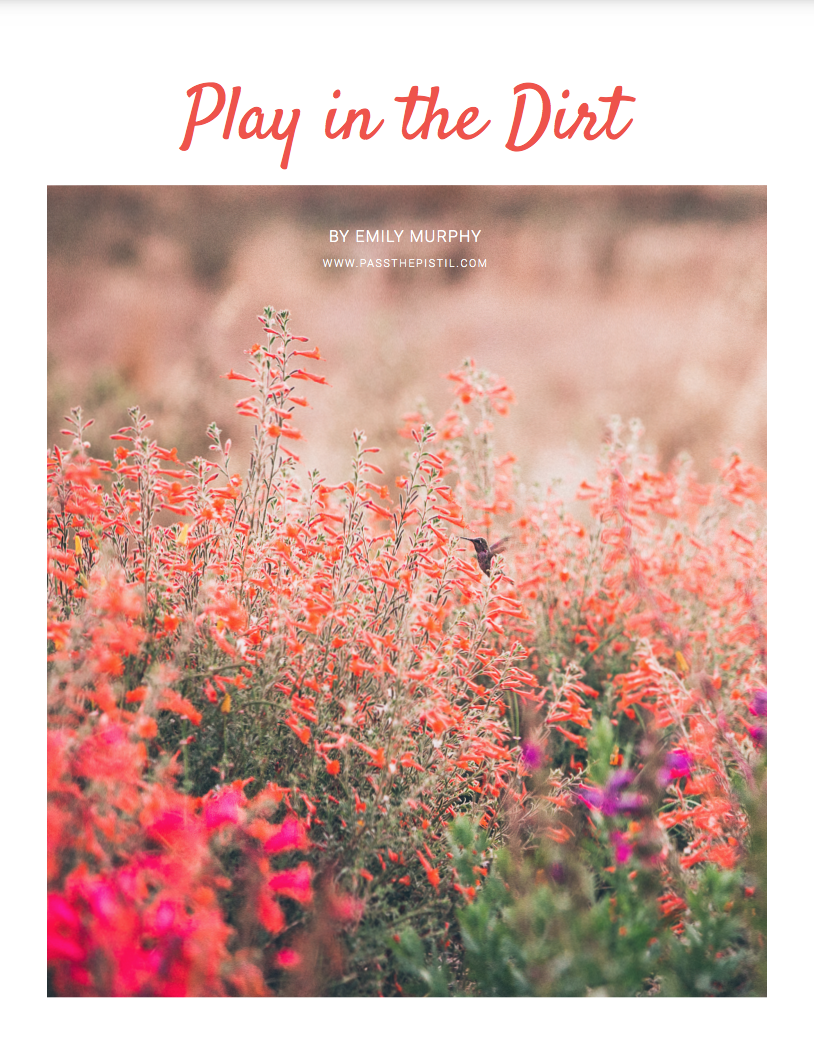Bee-Friendly Plants for your Garden
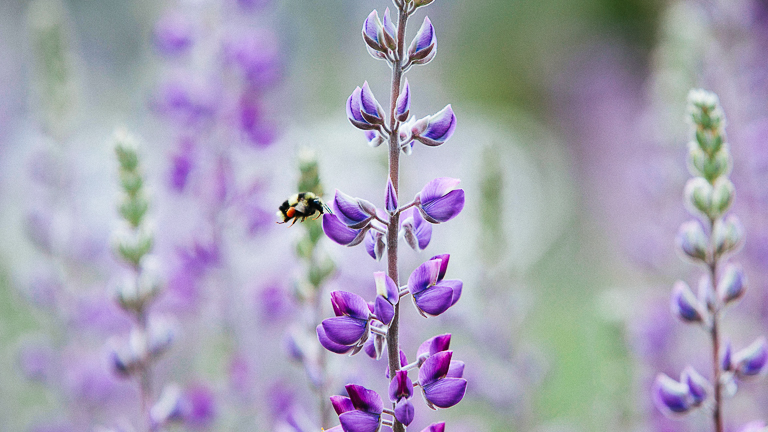

Lupine/Photo by Emily Murphy
The best bee-friendly plants for your garden are a diversity of plants that bloom through the seasons and are chemical-free. Look to native plants, kitchen garden favorites, fruit trees, and even flowers grown for cutting to help bees.
The Best Plants for Bees
Grow dandelions and patches of wildflowers. Shrink your lawn and swap turf for native plants and borders of lupine and lavender. Let sunflowers grow tall and be gentle when tidying early-blooming weeds. Seed plants like borage and poppies along sidewalks and leave roadside verges uncut.
5 Reasons to Shrink Your Lawn and Mow Less
Our gardens and the places we cultivate have the potential to form living greenways, connecting fragmented habitats, whereas farm fields are feast or famine for bees and other insects.
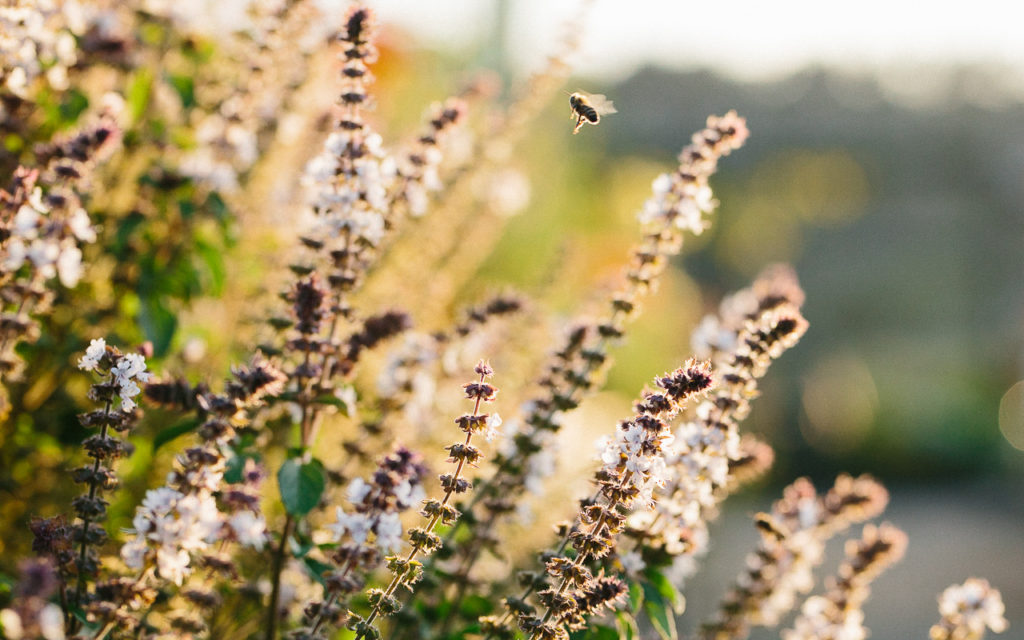
African blue basil/Photo by Emily Murphy
Grow Organically
Bees are tiny creatures and highly sensitive to synthetic sprays and fertilizers. Garden using organic practices and grow your own plants from seed or choose plants from local growers whenever possible.
In the US, plants that cross state boundaries are generally treated systemically with pesticides and herbicides to ensure pests aren’t transferred between states. These treatments are harmful to insects like bees and other insects including butterflies.
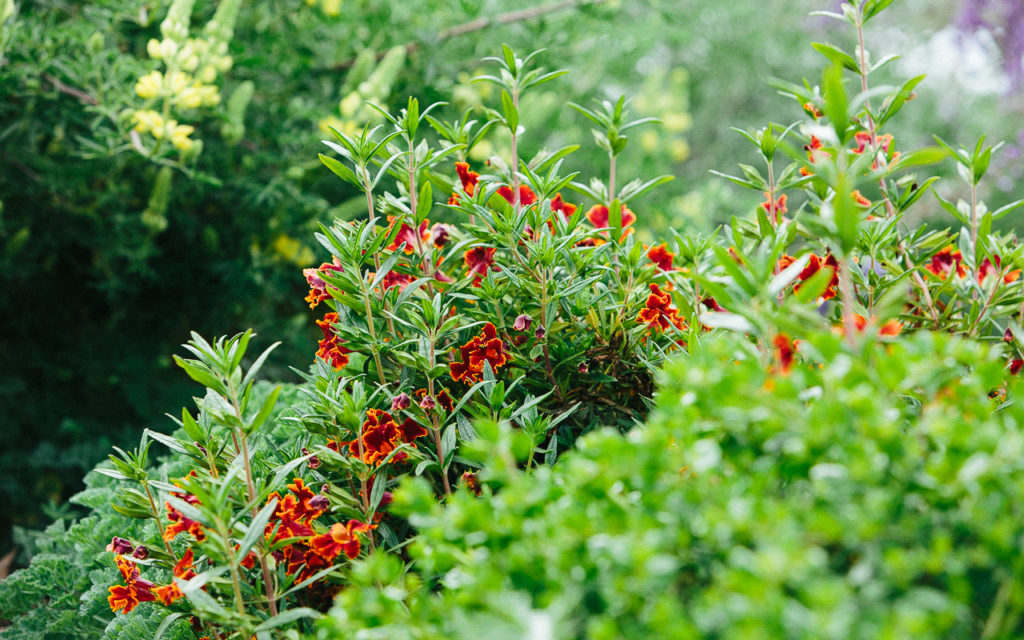
Mimulus/monkeyflower Photo by Emily Murphy
Biodiversity Attracts Biodiversity
Again, grow a diverse range of plants that bloom through the seasons. Consider growing plants that bloom in early and late spring, through summer, and well into fall and even winter depending on your climate.
It’s also important to consider growing a wide variety of plants to support a wide variety of bees. Some bees, particularly native bees, are specialized and adapted for foraging from particular groups of plants and some are generalists like honeybees.
To help make sense of it, you know how you sometimes hear people suggest eating a rainbow of colors? We need at least 5 servings of fruit a day and a variety of fruit of different colors is even better. It ensures our bodies are getting a range of nutrients. It’s the same with our landscapes. When we plant mono-crops we’re providing a single food source that may only produce pollen and nectar in spring, like with almonds. But if we grow perennial borders and native plants around almond trees, the landscape has more to offer.
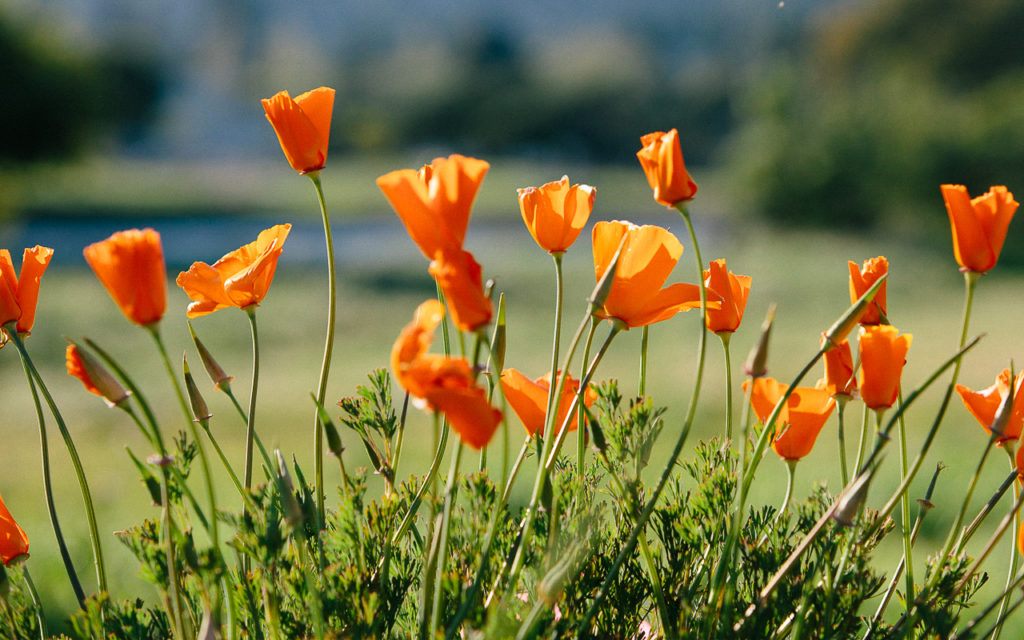
California poppies/Photo by Emily Murphy
Native Plants
If possible, replace 50% or more of the non-native plants in your landscape for natives. Native bees and native plants are made for each other, having co-evolved for eons. So it only makes sense to look to native plants to support native bees. The Xerces Society has a replete set of lists of native plants by region. Find the list for your region here.
Ornamental and Edible Flowering Plants and Trees
There is an incredible number of plants that provide a variety of services and ecosystem functions. These may be plants you grow for beauty because you love them; plants that offer fruit like berries and apples; and even plants that provide screening from neighbors or divert the wind.
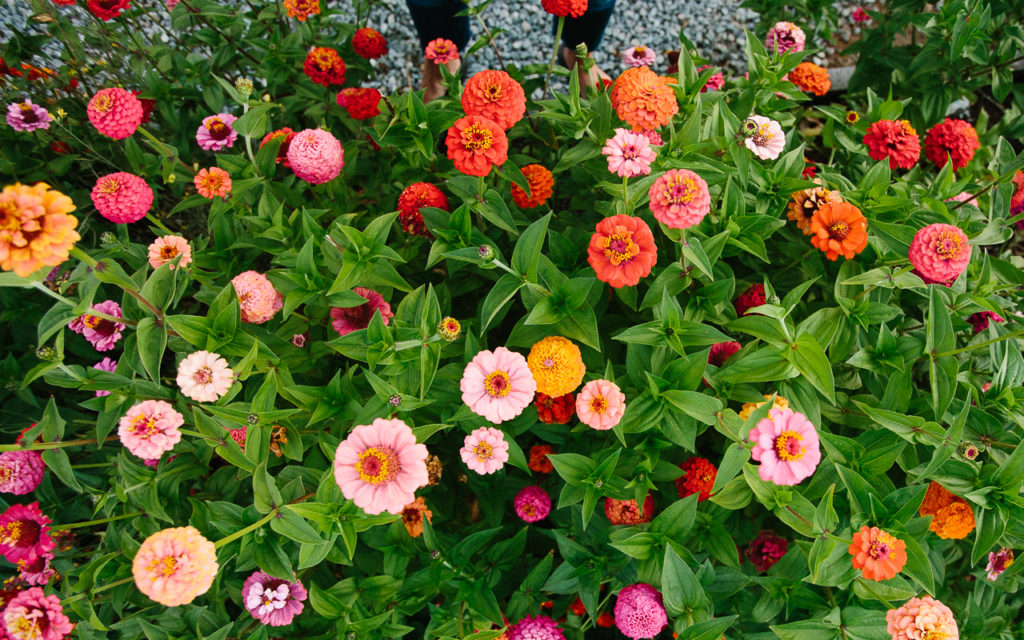
Zinnias/Photo by Emily Murphy
Herbs, Veggies, and Kitchen Garden Companion Plants
A thoughtfully planted food garden is a mecca for bees and we need their help pollinating our crops. Have you ever noticed bees climbing in and out of squash flowers or the bees that flock to basil?
When we interplant with companion plants such as calendula, chamomile, zinnias, Scabiosa, sunflowers, violas, and nasturtiums we invite them in. Bees also love herbs like thyme, sage, rosemary, mint, and chives.
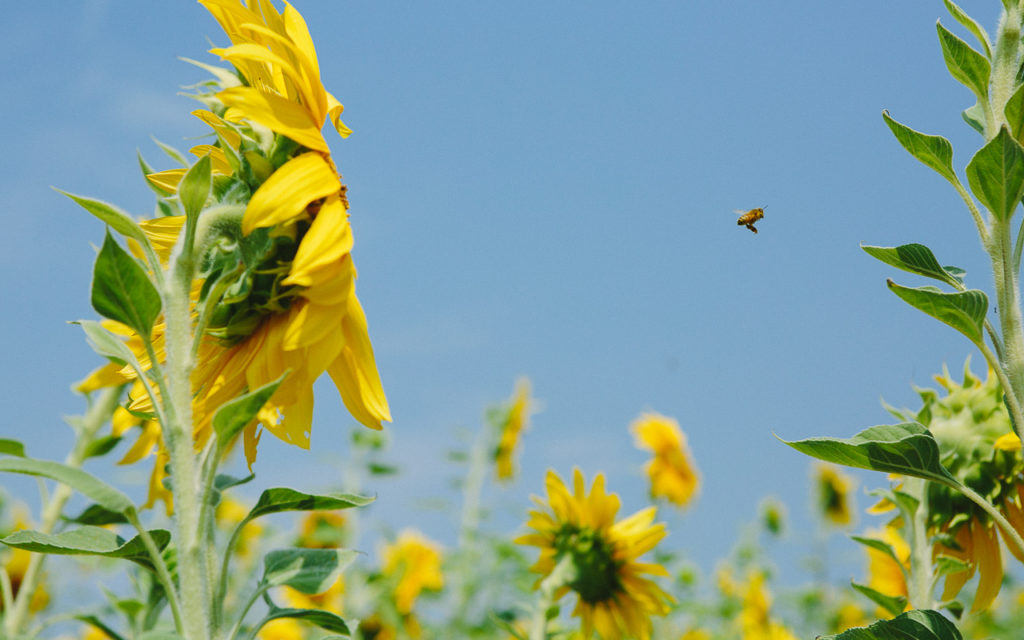
Sunflowers/Photo by Emily Murphy
Hint: When selecting plants do your best to think like an ecosystem. Watch, listen and spend time observing which plants wildlife like bees prefer. Are there some plants they pass over without a glance and others alive with their buzz? Some hybrids are sterile and don’t offer nectar or pollen while others are better. Sometimes the only way to know for sure is to watch, listen, and take notes. From here, you can edit and add plants to your garden as needed.
36 Groups of Plants to Consider (but there are many more + don’t forget native plants unique to your region)
- Sage
- Lavender
- Sunflowers and other plants in the aster family
- Nepeta (Catmint)
- Verbena
- Fruit trees
- Poppies
- Phacelia
- Echium
- Agastache
- Culinary Herbs
- Mint
- Bee Balm
- Milkweed
- Goldenrod
- Zinnias
- Single or simple Dahlias
- Borage
- Kitchen Garden Edibles
- Aster
- Rudbeckia
- Echinacea
- Penstemon
- Lupine
- Yarrow
- Angelica
- Carrot family plants such as Queen Anne’s lace, fennel, and dill
- Ceanothus
- Hydrangea
- Mallow family plants such as hollyhocks and rose of Sharon
- Blanket flower (Gaillardia)
- Scabiosa
- Nigella
- Ornamental basil like African blue basil
- Ericaceae family plants such as blueberries and huckleberries
- Ribes
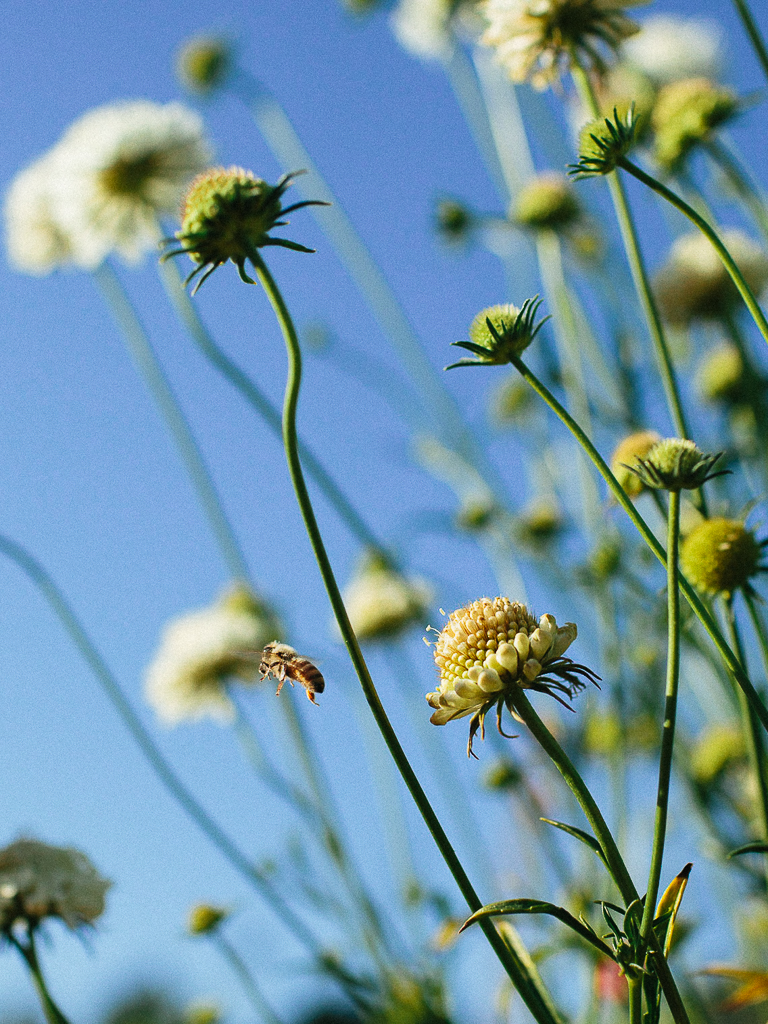
Scabiosa/Photo by Emily Murphy
Other articles you might enjoy:
What is Organic and Why is it Important?
5 Reasons to Shrink Your Lawn and Mow Less
Grow a Better Pollinator Garden
Listen
Buy The Book
Special offers
Newsletter Signup
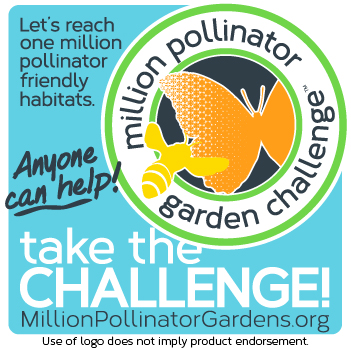
Archives
Disclosure
Pass The Pistil is a participant in the Amazon Services LLC Associates Program and other affiliate programs such as Etsy, affiliate advertising programs designed to provide a means for sites to earn fees by advertising and linking to curated affiliate sites.

